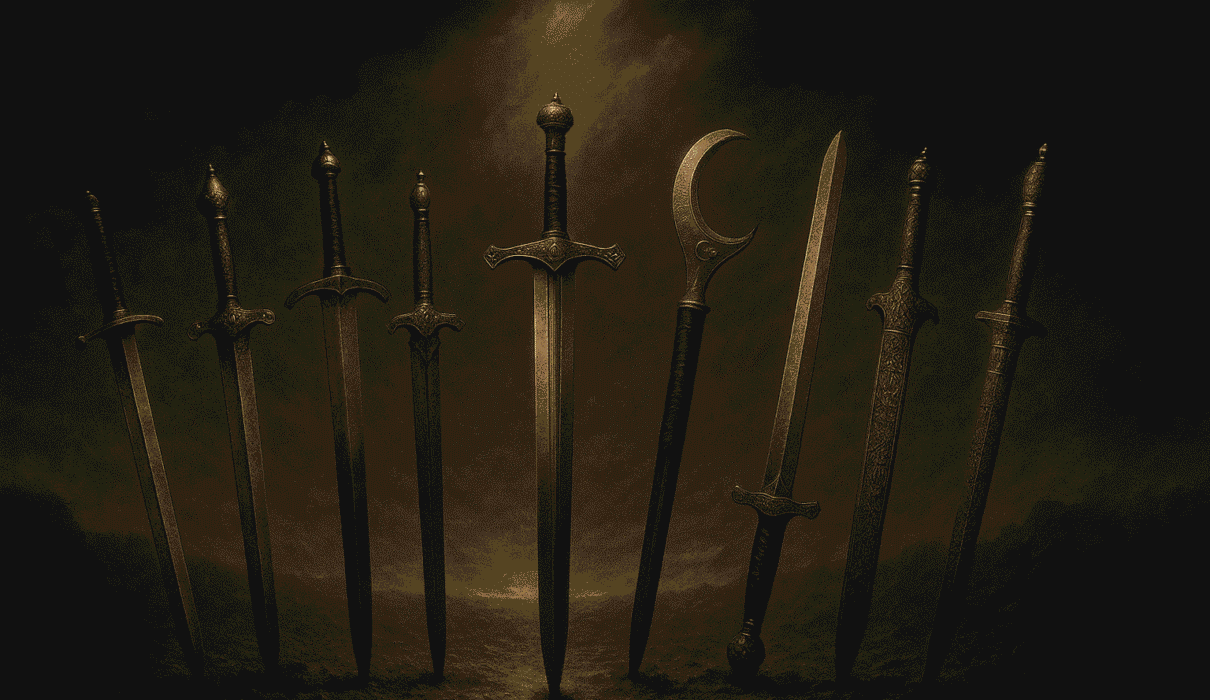Table of Contents
Throughout history, swords have not only served as weapons of war but also as symbols of authority, honor, legacy, and divine right. Some swords became so famous that they achieved legendary or even mythical status—immortalized in literature, royal chronicles, and cultural lore. Their wielders, often kings, knights, generals, and deities, became synonymous with valor and justice.
This article explores some of the most famous swords in global history—swords that have captivated historians, inspired filmmakers, and become prized objects of fascination across the modern world, especially in regions like the United States, Canada, Australia, and the UK.
Excalibur – Wielded by King Arthur
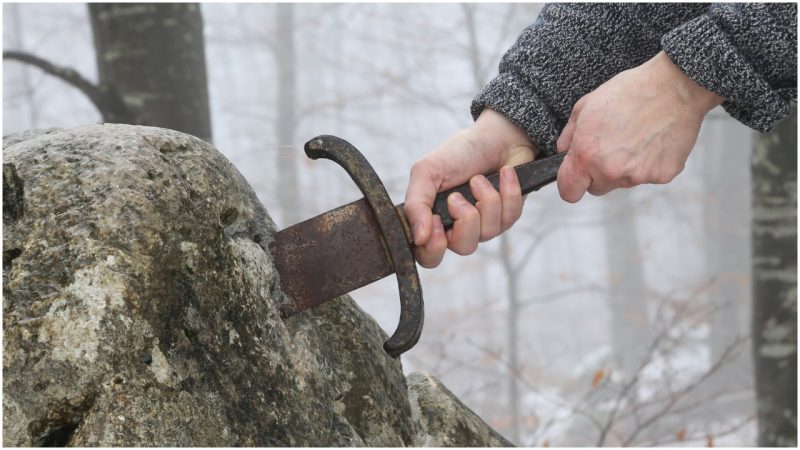
One of the most iconic swords in Western history, Excalibur is closely associated with the British monarch King Arthur. Though its historical existence is debatable, the sword is steeped in medieval legend. Excalibur is either the sword drawn from the stone, symbolizing Arthur’s divine right to rule, or the sword given by the Lady of the Lake, depending on the version of the tale.
It was said to have magical properties, including being unbreakable and able to blind enemies in battle. The mythos surrounding Excalibur helped shape the chivalric ideals of medieval Europe and remains an enduring symbol in modern Western literature, art, and film.
Joyeuse – Wielded by Charlemagne (France)
![Joyeuse, allegedly the personal sword of Charlemagne, used for French coronations from 1270 to 1824. 9th-13th century CE, now on display at the Louvre Museum. [1500x888] : r/ArtefactPorn](https://i.redd.it/isp4brn4o4v71.jpg)
The coronation sword of Charlemagne, Joyeuse, blends historical fact with a layer of legend. Used in royal coronations for centuries, the sword is housed today in the Louvre Museum. Its design has evolved over time, with pieces from various eras added or modified, but it remains one of the most important symbols of French medieval heritage.
Joyeuse symbolized both temporal power and divine sanction. It is often described in literature as shining brighter than the sun and is said to contain holy relics. The sword represents the ideal of divine monarchy that was central to medieval European political thought.
Honjō Masamune – Wielded by Tokugawa Ieyasu (Japan)

Crafted by the famed Japanese swordsmith Masamune, the Honjō Masamune is regarded as one of the finest katana blades ever made. It became a treasured heirloom of the Tokugawa shogunate, a powerful dynasty that ruled Japan for over 250 years.
This sword symbolized peace through strength and the unification of Japan. Despite its storied history, the Honjō Masamune disappeared after World War II and has not been seen since. Its loss remains one of the greatest unsolved mysteries in the world of historical weaponry and has only enhanced its legend.
Wallace Sword – Attributed to William Wallace (Scotland)
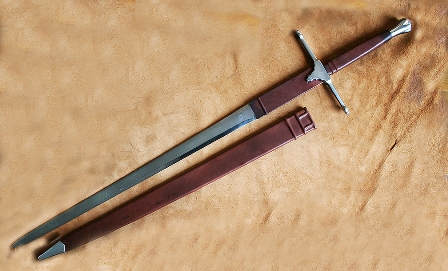
The Wallace Sword is attributed to Sir William Wallace, a Scottish knight who led resistance efforts against English rule during the late 13th century. The sword, notable for its massive size and weight, is kept on display in the National Wallace Monument in Stirling, Scotland.
While some parts of the sword may have been modified in the centuries since Wallace’s death, the weapon remains a national symbol of Scottish freedom. Popularized worldwide by the film “Braveheart,” the Wallace Sword is a powerful emblem of resistance and patriotism, especially among the Scottish diaspora in countries like the United States, Canada, and Australia.
Zulfiqar – Attributed to Ali ibn Abi Talib (Islamic Tradition)

Zulfiqar is the legendary sword of Ali ibn Abi Talib, the cousin and son-in-law of the Prophet Muhammad. It is described in Islamic lore as a bifurcated, or forked, sword that was gifted to Ali during the Battle of Uhud.
Though the physical existence of Zulfiqar cannot be verified, it remains an iconic spiritual and religious symbol in Islamic art and literature. In Shia Islam, it represents justice, sacrifice, and divine authority. Across the Islamic world and among Muslim communities in the West, Zulfiqar continues to be revered as a symbol of righteousness and heroism.
Durandal – Linked to Roland (France)
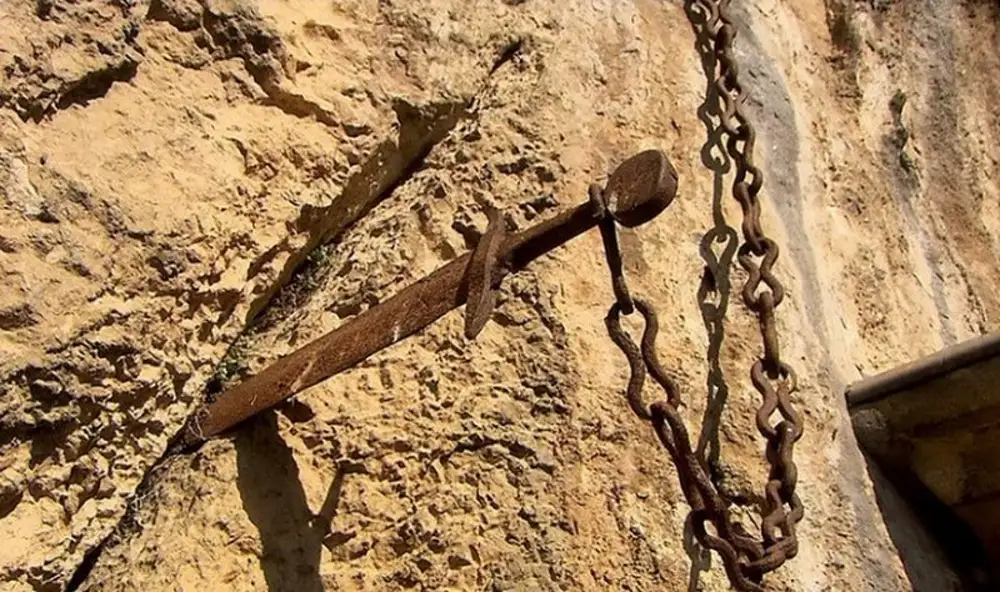
According to the medieval epic “The Song of Roland,” Durandal was the sword wielded by Roland, a legendary knight in the service of Charlemagne. The sword was said to be indestructible and imbued with relics of saints, including a tooth of Saint Peter and a strand of the Virgin Mary’s hair.
In the story, Roland uses the sword to fight overwhelming forces at the Battle of Roncevaux Pass and attempts to destroy it before his death to keep it from enemy hands. The legend of Durandal combines themes of loyalty, courage, and spiritual faith, and has played a significant role in shaping the medieval chivalric tradition.
Kusanagi-no-Tsurugi – Japanese Imperial Mythology

Kusanagi-no-Tsurugi, or the “Grass-Cutting Sword,” is one of Japan’s Three Imperial Regalia. Rooted deeply in Shinto mythology, the sword was found in the tail of a giant serpent by the god Susanoo and was eventually passed down to the Imperial family.
While the actual sword has never been publicly displayed, its mythological and cultural significance is enormous. It symbolizes the legitimacy of the Japanese Emperor and continues to feature in enthronement rituals. The tale of Kusanagi represents the intersection of mythology, religion, and national identity.
Ulfberht Swords – Viking Nobility
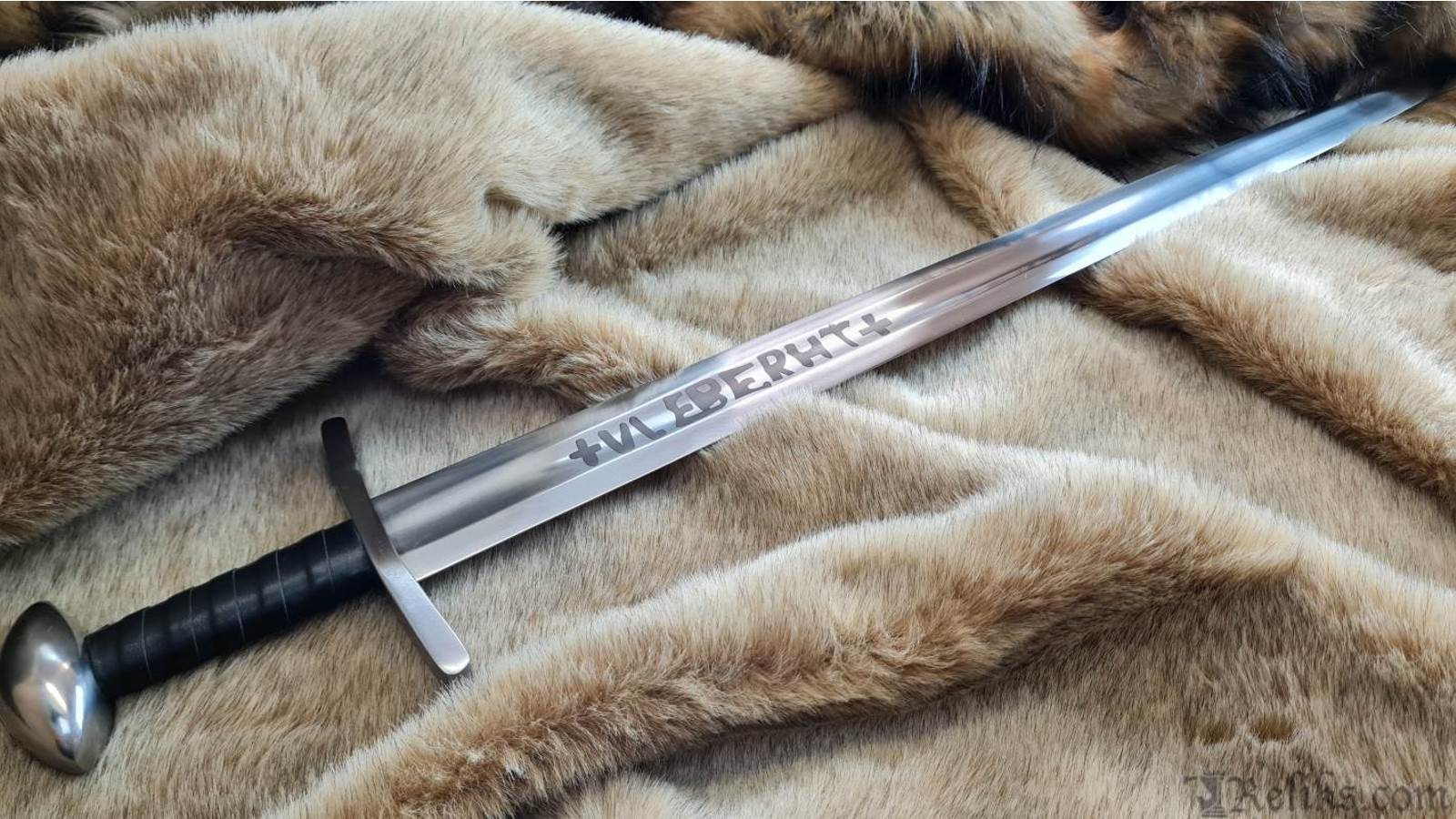
The Ulfberht swords are a collection of medieval Viking blades inscribed with the name “+VLFBERHT+”. These swords were crafted using crucible steel, giving them superior strength and flexibility compared to other European blades of the time.
Used by elite Viking warriors and nobles, these weapons were considered luxury items and evidence of far-reaching trade networks, possibly extending to Persia or India. Modern metallurgical studies have shown that the steel quality was centuries ahead of its time, further adding to the swords’ mystique and reputation.
Sword of Goujian – King Goujian of Yue

Discovered in 1965 in a tomb near the Jingzhou region of China, the Sword of Goujian dates back over 2,500 years. Remarkably, it was found in nearly pristine condition, with an untarnished blade and intricate designs still visible.
Attributed to King Goujian of the Yue State during the Spring and Autumn period, the sword is renowned for its balance, durability, and ornate construction. Today, it stands as a testament to the metallurgical skills of ancient China and is a highlight of Chinese historical weaponry in museums around the world.
Other Noteworthy Swords
While the swords listed above are the most iconic, many others have left their mark on history:
- Balmung – the sword of Siegfried from the Germanic Nibelungenlied, associated with dragon-slaying and cursed treasure.
- Shamshir-e-Zomorrodnegar – a legendary Persian sword used by King Solomon in Middle Eastern folklore.
- Tizona and Colada – swords associated with the Spanish hero El Cid, symbolizing honor and national defense.
- Gram – used by Sigurd in Norse mythology to slay the dragon Fafnir, symbolizing vengeance and heroism.
Each of these weapons, whether rooted in legend or confirmed through archaeology, represents something larger than the metal from which it was forged: ideals, cultural memory, and human aspiration.
Why These Swords Still Matter
Even centuries after they were first forged or imagined, these famous swords continue to hold significance across international cultures for a number of reasons:
- Symbolism: Swords represent justice, valor, authority, and divine power across many civilizations.
- Historical Education: Museums, documentaries, and academic texts continue to showcase these swords as educational tools.
- Cultural Pride: Many people in the USA, Canada, Australia, and Europe see these swords as part of their ancestral or cultural heritage.
- Pop Culture Influence: These swords have inspired countless novels, films, video games, and cosplay communities.
- Artistry and Craftsmanship: Even as weapons, these swords were often works of art—beautifully forged, engraved, and ornamented.
Whether ceremonial, mythological, or functional, each of these swords tells a story—of the individuals who wielded them, the cultures that revered them, and the ideals they came to represent.
Conclusion
The legacy of famous swords is not confined to the pages of ancient chronicles. Their stories are still being told in museums, films, books, and classrooms across the globe. In a modern world increasingly driven by technology, the enduring fascination with these blades is a testament to their symbolic power and historical significance.
From the mysterious Excalibur to the technically advanced Ulfberht, from the spiritual Zulfiqar to the legendary Durandal—these weapons endure not as instruments of war, but as carriers of culture, ideals, and memory.
References
- Encyclopedia Britannica – Excalibur
- Louvre Museum Archives – Joyeuse
- Historic Mysteries – Honjō Masamune
- National Wallace Monument – Wallace Sword
- Oxford Islamic Studies – Zulfiqar
- Rocamadour Tourism Board – Durandal
- Japan Encyclopedia – Kusanagi-no-Tsurugi
- PBS NOVA – Ulfberht Sword
- China Daily – Sword of Goujian
- Academic texts on Norse, Spanish, and Persian mythology


